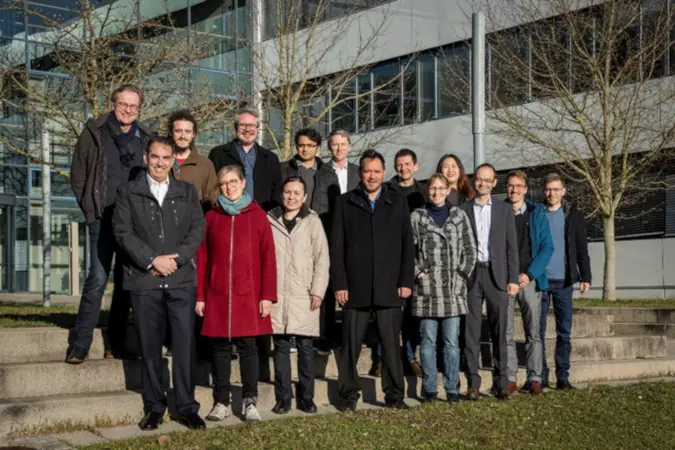EU Project "SONAR"
Chemistry via computing: EU-funded project "SONAR" will develop a new method to identify electroactive substances for organic redox-flow batteries.
Renewable energy sources like solar cells (photovoltaics) and wind turbines require large-scale energy storage systems to balance out fluctuations in energy generation. Redox-flow batteries (RFBs) are considered to be one of the most promising solutions. RFBs store and release energy as electrons are swapped between two chemical reactants, via an electric conductor. The wide range of electroactive substances available – many of which occur in nature – means that vast numbers of potential redox-flow systems remain to be explored.
The EU-funded project SONAR, which is coordinated by the Fraunhofer Institute for Chemical Technology ICT in Pfinztal, Germany, aims to take the guesswork out of chemical screening, by using physics- and data-based modelling to identify promising electroactive substances.
Challenges
The greatest challenge is to ensure viability on every level: a substance might have excellent individual properties, but complex interactions between the materials, the battery design, the mode of operation and also economic considerations can mean that it fails within a dynamic industrial system.
SONAR will therefore integrate models on multiple length scales, from the atomistic scale up to the battery stack and system. In order to process the vast amount of data that results from computer simulation of materials and redox flow cells, the project will apply statistical methods, data analysis and machine-learning, and will compare the calculated results with experimental measurements at each stage.
The end result will be a unique, multiscale screening service for organic redox-flow batteries, which for the first time will allow meaningful comparisons between competing organic RFB systems in terms of costs, lifetime and performance (so-called „levelized cost of storage“).
Notable Experts

The project partners are notable experts for the modeling of electrochemical cells on all length scales. These include Fraunhofer ICT (the site of Europe’s largest redox-flow battery) and Fraunhofer SCAI, the Department of Energy Conversion and Storage at DTU, Denmark, the LCRS Université de Picardie Jules Verne in France, the Zurich University of Applied Science in Swizerland, the German Karlsruhe Institute of Technology and the Australian University of New South Wales (inventor of today’s most commonly used vanadium RFB).
The partners will work closely together with five associated industrial companies to speed up redox-flow battery development to meet the growing demands of the green energy sector. The project will run for four years, starting from 1st January 2020.